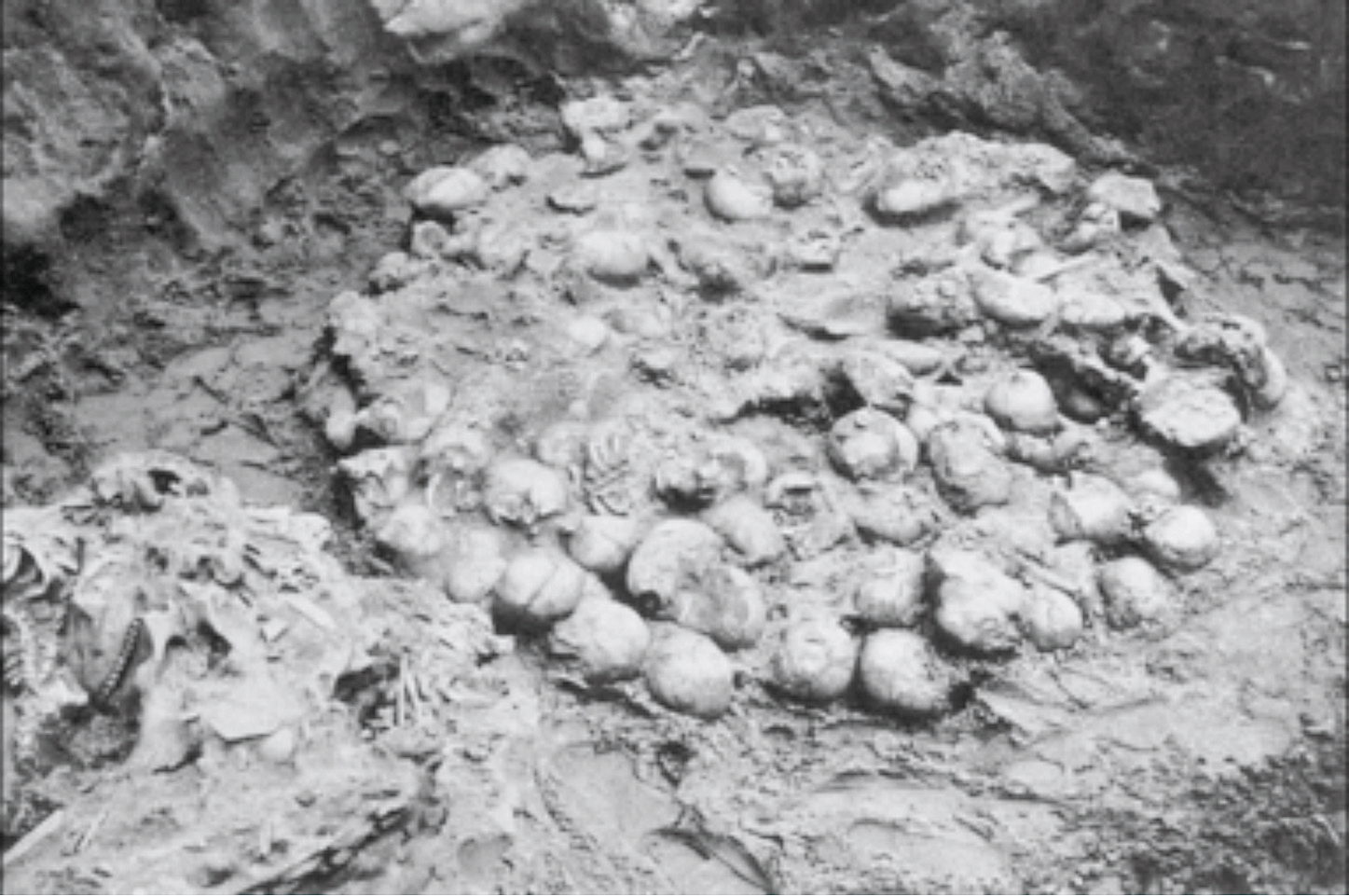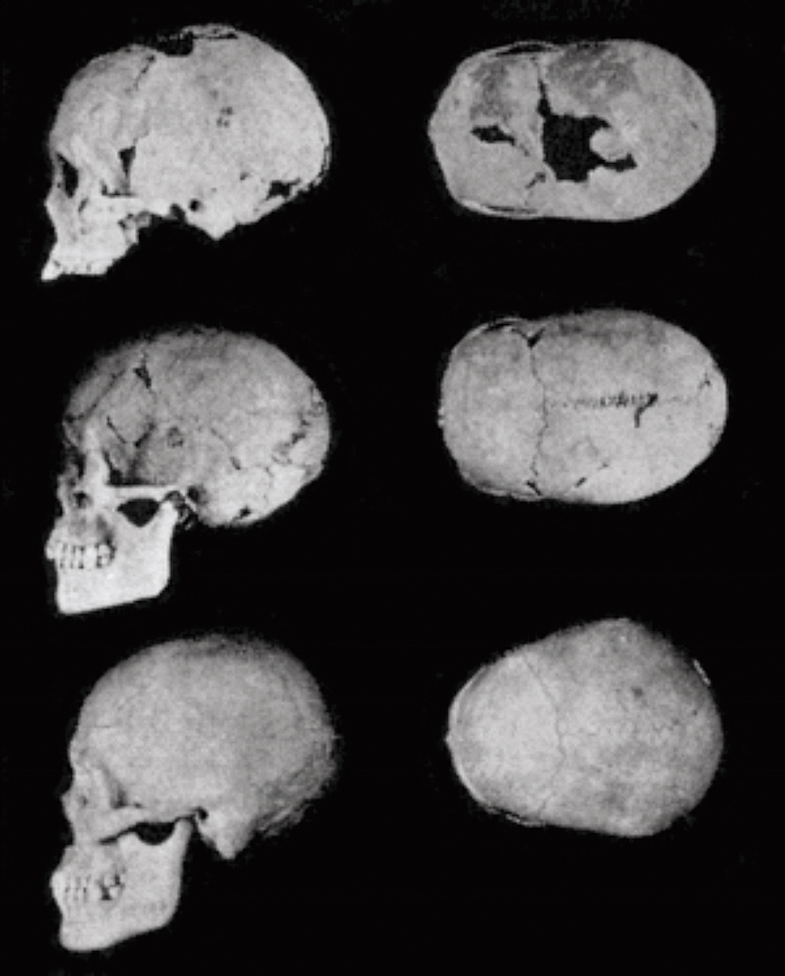F3
Medieval human skeletons from Zaimokuza, Kamakura
Kamakura city, surrounded by mountains and the sea, was the capital of Medieval Kamakura. Since then, a number of human skeletal remains have been uncovered along the sea coast. The excavation of Zaimokuza site and the human remains marked the first milestone for the historical study of Kamakura.
More than 910 individuals were uncovered during the third-times campaigns in 1953 and 1956 by Department of Anthropology, the University of Tokyo. The majority of them were composed of partial skulls or limbs, not of the whole body parts, which were secondarily collected and separately buried in 32 variable-sized bone pits. The associated pottery fragments and old coins dated the site to the Kamakura Period. A large number of human bones were believed to be the war dead, who had been cleared and collected after death.
As for the sex and age structure based on the skulls (Suzuki 1956), the ratio of male, female and immature was 6:3:1, and young adults were dominant compared to elderlies. The observed cranial trauma was dominant in slighter scratches and less in deeper wounds by sword cut. These were not interpreted as the war-induced trauma, but as the vault scalping for the superstitious treatment against epidemics (Suzuki 1956).
The Zaimokuza human has served as a representative of Medieval East Japan in order to document the microevolution of the Japanese. The skull is characterized with a dolichocephalic head and a strong alveolar prognathism. It has been confirmed that the dolichocephalic trend appeared strongly in the medieval period among the population history in Japan. (Osamu Kondo)
References
鈴木 尚(代表者)(1956)『鎌倉材木座発見の中世遺跡とその人骨』日本人類学会編、岩波書店。
鈴木 尚(1963)『日本人の骨』岩波書店。
平田和明ほか(2004)「鎌倉市由比ヶ浜地域出土中世人骨の刀創」Anthropological Science (Japanese Series) 112: 19–26.


